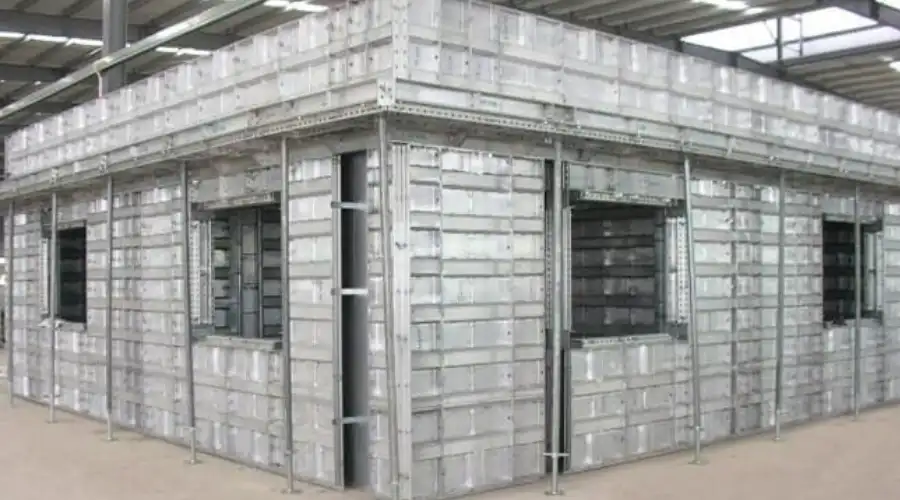In the modern construction field, homeowners are often concerned with choosing the right construction method, without sacrificing the looks and physical properties. There are numerous types of construction techniques in practice. Among them, mivan construction and brick construction are most commonly used, due to the immense benefits they offer. This blog will explore both construction techniques in detail and help you identify the best method that best suits your building.
What is Mivan Construction?

Mivan construction or Mivan shuttering is an advanced precast construction technique that uses reusable aluminium formwork to cast concrete structures. It uses pre-fabricated aluminium panels in the shape of walls, floors and ceilings, where concrete is poured to attain the necessary shape and structure. This technique is highly useful in multi-storey construction where faster construction with a high-quality finish is crucial.
What is Brick Construction?

Brick construction or masonry construction is a traditional and ancient construction method that uses fired clay bricks as the primary raw material. In this method, the bricks are bonded together using mortar to build structural components of the building such as walls, foundations, etc. It is commonly used for both residential and commercial buildings of all sizes.
Comparison: Mivan Construction vs Brick Construction
| Features | Mivan Construction | Brick Construction |
| Strength | Mivan constructions are strong due to the reinforcement rebars installed within the formwork, and its bond with the concrete. | Brick constructions are strong, but the strength is generally less compared to Mivan construction. |
| Thermal Insulation | This construction provides good thermal insulation, maintaining the room temperature in even harsh weather conditions. | The firebricks used in the construction are natural insulators that protect the structure from external heat and humid conditions. |
| Durability | This construction is highly durable, as it can withstand any type of weather conditions and wear. | This construction is durable but is prone to weathering and moisture-related damage over time. |
| Finish Quality | Mivan construction provides a smooth and high-quality finish that generally requires no plastering. | Brick construction provides a rough finish that requires plastering or additional finishing works unless higher-quality exposed bricks are used. |
| Aesthetic Flexibility | Its aesthetic flexibility is limited due to its concrete finishes. | Brick construction is highly flexible, as various brick patterns, textures, and colours can add more appealing looks to the structure. |
| Construction Speed | The pre-fabricated aluminium formwork and quick pouring of concrete result in faster construction. | This construction process is slower, as the bricks are laid individually by applying mortar. |
| Cost | The material cost, labour cost and construction cost are typically higher than brick construction. | The materials cost, labour cost and construction cost are typically low compared to Mivan construction. |
| Maintenance | Mivan construction often requires low maintenance, as concrete requires fewer repairs. | Brick construction requires higher maintenance, as the mortar and bricks used are prone to cracks and degradation and need timely repair. |
| Reusability | Aluminium formworks can be reused multiple times, reducing the cost over time. | Bricks may be reused, however, mortars cannot, as they require more frequent repairs. |
| Environmental Impacts | Since aluminium formworks are reusable, the wastage is reduced, however, the production results in carbon emission. | The production of bricks consumes a lot of natural energy, and the transportation causes pollution. |
| Typical Applications | Mivan construction is suitable for multi-storey residential and commercial buildings, especially large-scale projects, where construction speed and strength are crucial. | Brick construction is used for the construction of small residential buildings, and in buildings where aesthetic flexibility and insulation are crucial. |
Advantages and Disadvantages of Mivan Construction
Advantages
- Mivan construction significantly reduces the construction time due to its pre-fabricated formwork. This helps in delivering the project within the time frame.
- These constructions are strong, resilient, and durable, making them withstand almost all types of external conditions.
- It ensures consistent, high-quality, and uniform construction throughout the structure.
- Since it uses precast components, it reduces the need for labour and thereby reduces the labour cost.
- It is highly suitable for compact spaces, where thinner walls can be constructed to maximise the living or usable space.
- The durable properties reduce the cost and effort spent on maintenance and help it last for a long time.
Disadvantages
- The construction cost is typically high due to specialised formwork, machinery and skilled labour.
- They offer less flexibility in design, where customisation is difficult.
- They do not provide natural insulation against extreme weather conditions, which often requires additional insulation materials.
- The repairing of cracks or damages on the concrete structure is complicated and expensive.
Advantages and Disadvantages of Brick Construction
Advantages
- Using high-quality bricks provides good strength and durability, which helps in making the structure long-lasting.
- It offers natural insulation that helps in keeping the structure warm in all climatic conditions.
- Brick construction is highly flexible and can be customised based on the design need.
- It gives a timeless, aesthetic look with the usage of a variety of brick textures, colours, and patterns.
- These buildings offer excellent sound insulation properties, keeping the structure free from external noises.
- Bricks are made from natural materials and they are environmentally friendly, especially when sourced locally.
Disadvantages
- The construction process is slow and time-consuming, as each brick needs to be laid and mortared individually.
- The brick construction process is a labour-intensive process in comparison to Mivan construction.
- It is not ideal for multi-storey buildings, as these require a large volume of bricks and mortar.
- This construction is prone to water and other moisture-related damages.
- It requires frequent maintenance and repair works, especially for replacing mortar and fixing cracks and degradation of bricks.
When to Choose Mivan Construction?
Mivan construction can be chosen for large-scale, high-rise residential or commercial buildings, where meeting tight deadlines, compact living spaces, durability, minimal maintenance and consistent finishing are key factors.
When to Choose Brick Construction?
Brick construction can be used for small-scale residential and other low-rise buildings, where natural ventilation, durability, and sustainability are key. They are highly preferred for rural environments, where bricks can be sourced locally.
Conclusion
In summary, both Mivan construction and brick construction offer unique benefits and challenges. Brick construction is a more traditional, and timeless construction technique that offers good design flexibility and natural insulation. On the other hand, Mivan construction is a more advanced technique that offers rapid construction, and a uniform finish. Mivan construction is suitable for high-rise buildings, especially in urban areas with limited spaces. Brick construction is suitable for low-rise residential buildings, especially in places where bricks can be sourced locally.

